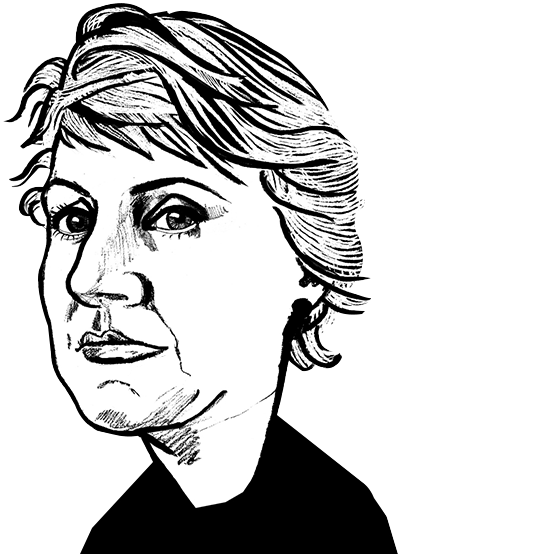
Potential for printed electronics in aerospace components
Opinion


Dr. Marie O’Mahony reports from Munich on the leading international exhibition and conference for flexible, organic and printed electronics.

22nd May 2024
Marie O'Mahony
|
Munich
LOPEC (Large-area, Organic & Printed Electronics Convention) with a conference and exhibition programme, has a core focus on Printed Electronics (PE) as well as Flexible Hybrid Electronics (FHE). As materials and processes become increasingly sophisticated, the role of flexible substrates such as paper and textile is also growing in the drive for new levels of innovation across market sectors such as wearables, health, medical and automotive.
LOPEC is held annually in Munich with a global reach attracting visitors from 48 countries and exhibitors from 28 countries, with Germany heavily represented as to be expected. While previously there were some presentations addressing the need for sustainable developments, at this year’s event it rose to become the dominant theme.
The Open Plenary Session saw Dr Alain Schumacher, CTO at IEE demonstrating the importance of printed electronic applications (PE) for sustainability. There are a number of factors that contribute to this, such as the lightness, flexibility, reduction of bulk, and during manufacturing a resource efficiency that is leading PE and Flexible Hybrid Electronics (FHE) to gain an increasingly prominent role in sustainable solutions where electronics are needed.
Elantas is a speciality chemical company whose portfolio includes conductive, insulating and dielectric screen printing inks. On the importance of environmental issues, Dr Petra Severit, CTO at Atlana points to the role in consumer electronics were there inks offer optimised printing properties that are flexible, thermoformable as well as resistant to high temperatures.
“Especially in consumer electronics, we are helping manufacturers to build every smaller and more powerful devices, thereby saving materials and energy,” comments Dr Severit.
“At the same time, our products help extend the service life of electronic components, which increases their sustainability.” The company has recently expanded its portfolio, acquiring a stake in the start-up Saralon, specialists in the development of inks for printing electronics that includes highly stretchable silver inks.
The Centre Technique Industriel de la Plasturgie et des Composites (IPC) highlighted developments for the sustainable integration of electronics in their presentation given by Lionel Tenchine. E-waste is the fastest growing solid waste stream growing at a rate three times faster than the world’s population.
2023 figures suggest a figure of 61.3 million tonnes worldwide, working out at around 8kg per person. Only 17.4% of e-waste is collected and recycled at present, with the improper recycling resulting in the release of dioxins, lead, mercury and other toxic substances. Design strategies such as repair and maintenance can extend the use phase of products, with refurbishment, reuse and redistribution helping to retain the product value and use delaying End of Life (EoL).
Printed Electronics (PE) and Flexible Hybrid Electronics (FHE) can positively impact on environmental impacts by offering reduction in weight, lowering the quantity of material used, enabling the integration of functionalities (such as traceability and authentication) to improve sustainability. Integration can pose challenges when it comes to reuse and recycling because of the multi-materials used.
To address this, circular considerations need to be brought in at the product design phase. This is where low power and energy harvesting can be specified, as well as biobased, biodegradable or particle-free inks, in addition to new substrates such as biobased polymers or cellulose-based paper.
Composites pose a particular challenge with current recycling solutions revolving around mechanical, thermal and chemical processes. IPC propose alternative approaches such as the use of thermoplastic resins for liquid-phase processing, the specification of reversible thermosets (based on Diels-Adler reactions) or reuse as a full or semi-product.
The key take-away from the IPC presentation is that end of life management needs to be applied at the earliest possible stage in the design process as the printed electronics are being integrated.
Can printed electronics be green alternative for PCB? This was the vision statement for the Ecotron project involving eleven partners and presented by the Holst Centre. This is a forty eight month European Union funded initiative falling under the Horizon-CL4-2021-Digital-Emerging program investigating functional electronics for the green and circular economy.

The Ecotron project addresses sustainability through a number of channels that are interlinked. Looking at the circular design of electronics through innovative dismantling technologies – effectively, designing for disassembly, the project partners are investigating novel bio based and compostable materials as a means of achieving this.
The whole value chain is being examined, that includes developing a blueprint plant for an industrial self-contained recycling process for printed electronics including recycling protocol and guidelines for LCA and EoL. Considering the design, materials and the process for recycling in parallel is an important step in avoiding the pitfall of a design process that is really only circular in theory.
It also highlights the necessity of the Horizon funding programs in addressing expansive environmental issues. Three generations of development goals have been identified. The first looks to transfer existing products to a printed electronics version, with a second generation moving to a circular version. The third stage aims to include bio-based, renewable, compostable materials.
Recycling strategies, including business models and a recycling blueprint are being developed throughout the Ecotron project. This addresses the European Waste from Electrical and Electronic Equipment (WEEE) Directive introduced in 2019 that imposes separate collection and proper treatment of e-waste. The project aims to achieve a 92% silver recollection through mechanical and chemical recycling as well as a 95% recollection of discrete components through reversible interconnects.
A number of use cases are underway across industries including wearables. The Polar Pro-strap/H10 use case integrates new technologies with the aim of improving the comfort levels of wearable activity tracking devices for athletes, fitness and healthcare applications. The current design includes a printed silver-coated fabric layer for EMI protection, a machine-washable strap and uses stretchable and flexible materials with smaller sensors to improve the user experience without compromising the technical performance or it’s alignment with other technologies such as indoor positioning and wireless communication.
Driven by a combination of European regulations and consumer demand, reducing environmental impact is likely to remain a key driver of innovation in the sector for the foreseeable future.

Business intelligence for the fibre, textiles and apparel industries: technologies, innovations, markets, investments, trade policy, sourcing, strategy...
Find out more